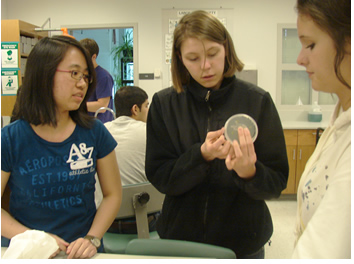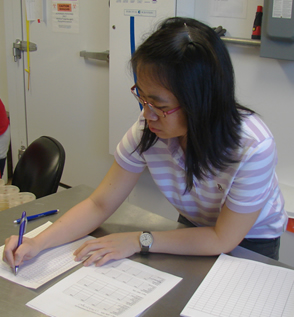 Students from local high schools, community colleges, and universities can participate in research projects related to Phytophthora and other oomycetes.
Students from local high schools, community colleges, and universities can participate in research projects related to Phytophthora and other oomycetes.
Ideas for student projects
Other student projects
Some projects done by students in 2012:
Pierce College, Puyallup, independent studies
Temperature growth rates of Phytophthora and Pythium species isolated from western Washington streams.
Temperature effects on root infection of Noble and Frasier fir by Phytophthora species isolated from western Washington streams and soils.
Effects of gypsum on sporulation of Phytophthora species.
Biocontrol of Phytophthora using various bark mulch treatments.
Bellarmine HS, Tacoma WA, senior projects
Fungus death match! – Antagonism of Trichoderma spp. to selected Phytophthora spp.
Some projects done by students in 2011:
Green River Community College independent studies
Screening a collection of Trichoderma spp. for antagonism to Phytophthora ramorum.
Pierce College, Puyallup, Biology 213
Stream sampling using “bait in a bottle” method at Clarks Creek
The “shoe experiment” year 2
Bellarmine HS, Tacoma WA, senior projects
Testing isolates of Phytophthora and Pythium for pathogenicity to Noble fir roots
Survival of P. ramorum in water from various streams in western WA
Some projects done by students in 2010:
Effects of salinity on P. ramorum growth, survival, and sporulation (UW Tacoma, Environmental Microbiology)
“The shoe experiment” – testing various disinfectants for sanitizing the bottoms of shoes (Pierce College, Puyallup, Biology 213)
Learn more about Phytophthora here
 Now you have data, what to do with it?
Now you have data, what to do with it?




